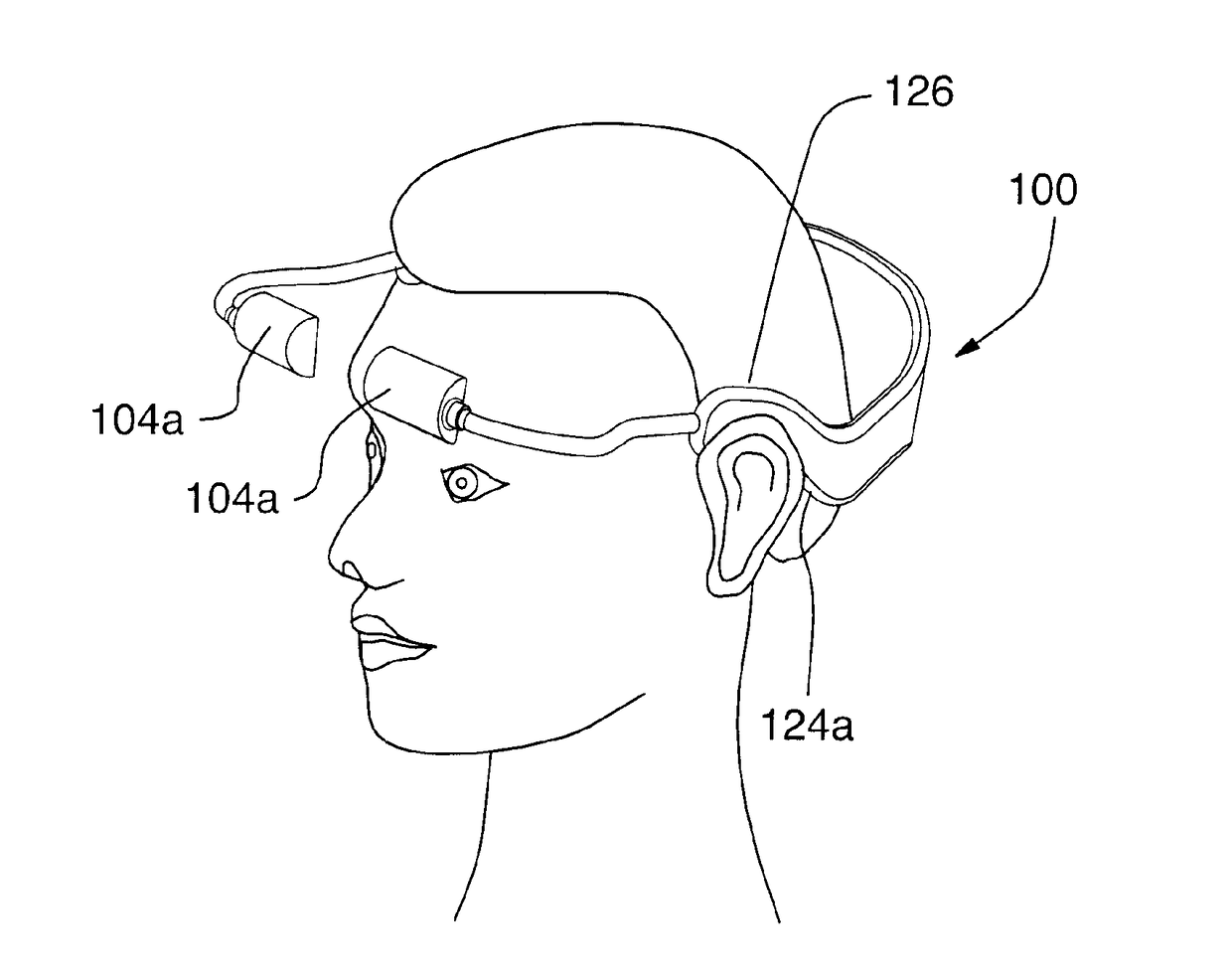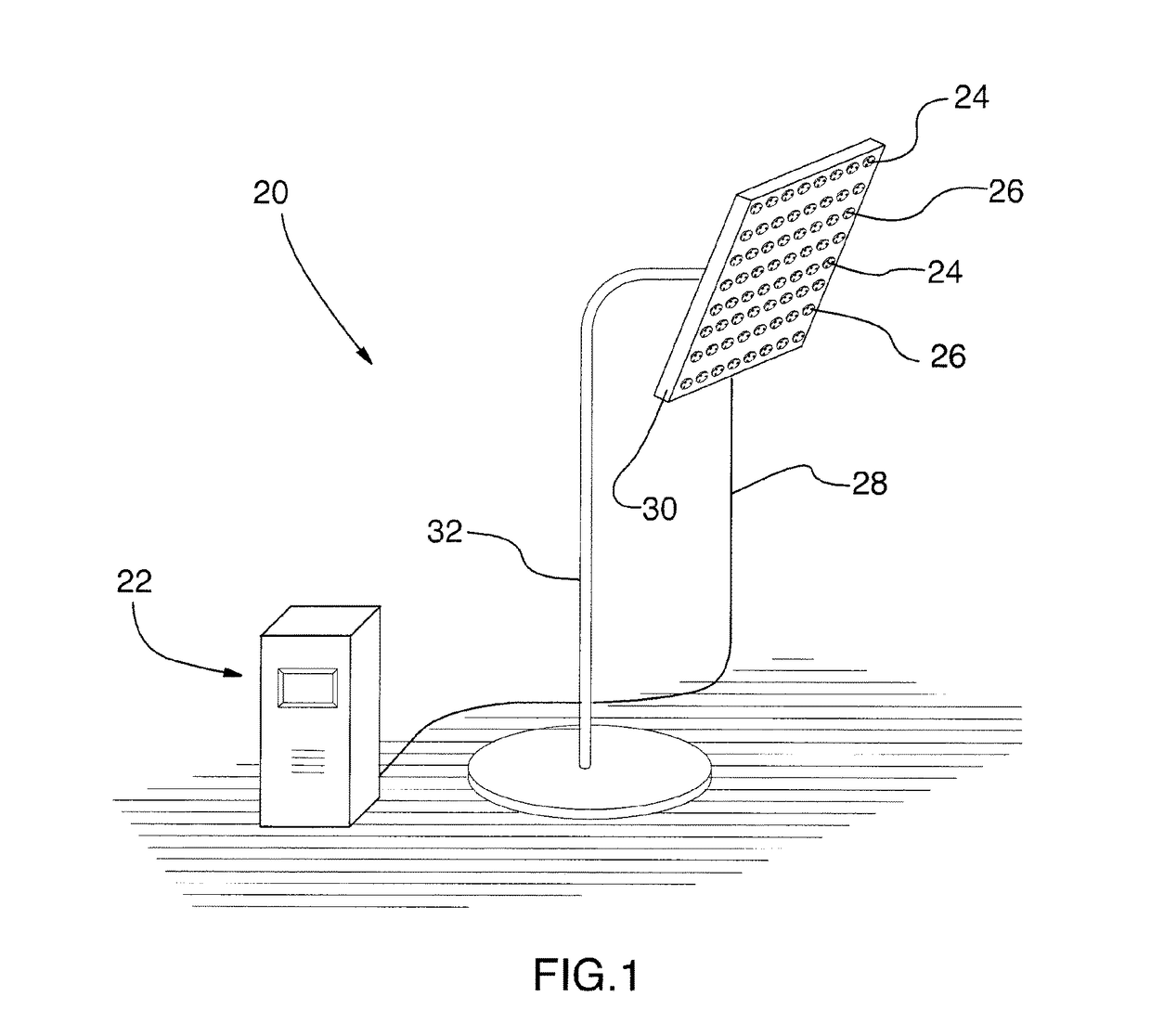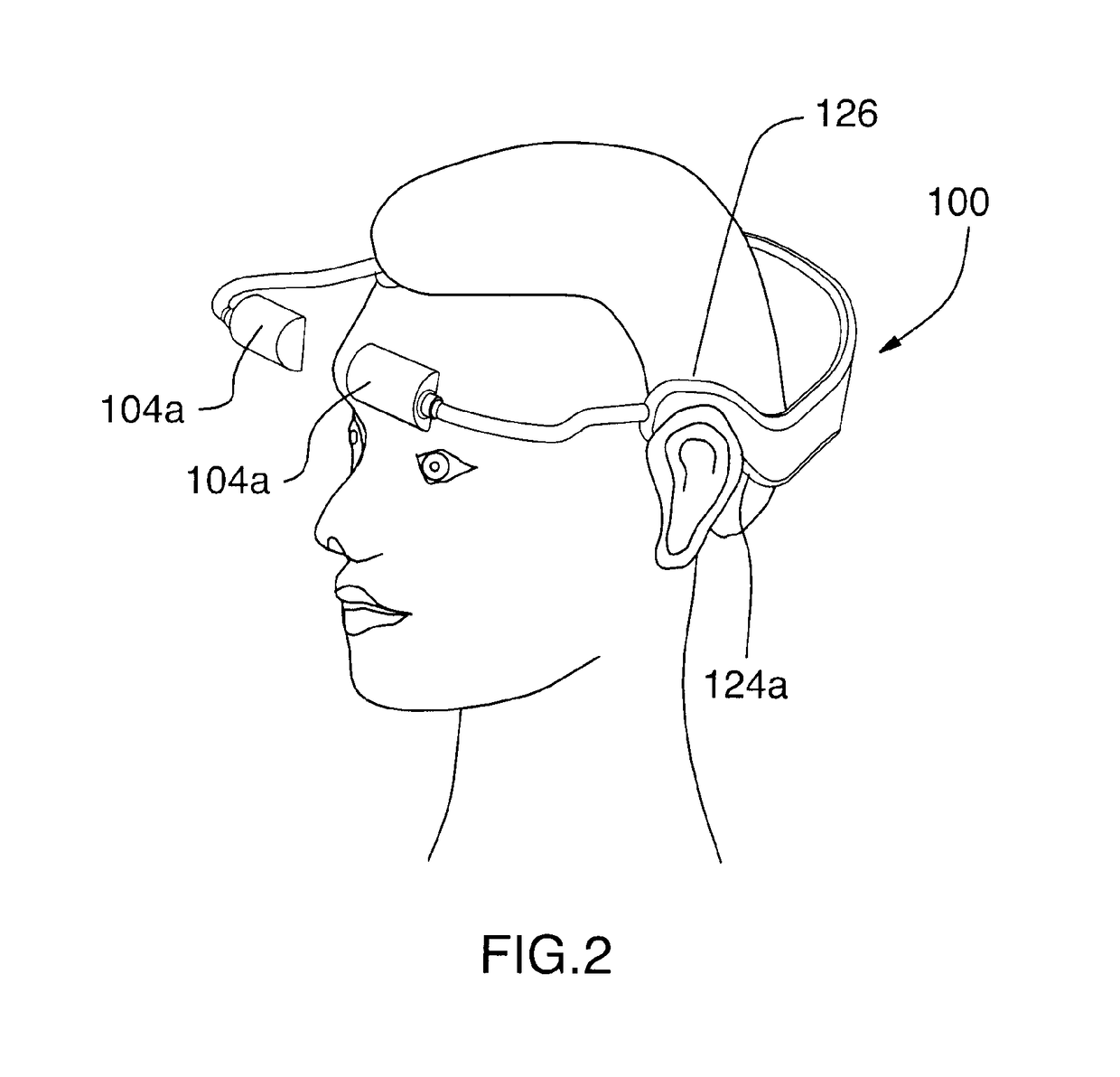Apparatus and method for influencing a condition in a subject
a technology of artificial light and condition, applied in the field of artificial light system and a method for influencing a condition in a subject, can solve the problems of reducing vigilance, reducing productivity, and increasing work-related incidents, and affecting the modulation of scn activity and biological rhythms thereby controlled
- Summary
- Abstract
- Description
- Claims
- Application Information
AI Technical Summary
Benefits of technology
Problems solved by technology
Method used
Image
Examples
example 1
[0094]Circadian rhythms in body temperature, heart beat and arterial pressure have been demonstrated. Body temperature has been reported to influence human performance, vigilance and alertness, which are reported to be better when body temperature is high and inferior when body temperature is low.
Material and Method
[0095]Subject—
[0096]The experiments were conducted on a 40-year old Caucasian male. The subject was generally healthy and did not report health condition generally associated with circadian rhythms disorders. The subject also maintained a regular sleep schedule over the two weeks of evaluation.
[0097]Light Exposure—
[0098]Twenty (20) minutes prior to each experiment, two (2) drops of tropicamide 1% (Mydriacyl®) were applied in each eye of the subject, to fully dilate pupils and avoid variation of pupils dilatation during experiments. The subject was comfortably seated in a reclining chair for the total duration of each experiment. Light stimulations were administered with a...
example 2
[0103]Melatonin is a good marker of the SCN response to light since suppression of melatonin secretion is correlated to the response of SCN to light stimuli. Accordingly, a strong suppression of melatonin secretion is an indicator of a strong response of SCN to a light stimulus. Further, because melatonin is secreted in saliva and can be monitored relatively easily by ELISA, the use of this hormone as indicator of SCN activity is convenient.
[0104]In this example, four (4) different light conditions were tested on a same subject over 4 weeks, each experiment being spaced from one another by one week, to assess the effect of such light conditions on melatonin secretion.
Material and Method
Subject—
[0105]The experiments were conducted on a 60-year old Caucasian male. The subject was generally healthy and did not report health condition generally associated with circadian rhythms disorders. The subject also maintained a regular sleep schedule over the four weeks of evaluation.
Light Exposu...
example 3
[0114]To assess the efficacy of the light system of the present invention, a light system generally corresponding to the light system 200 was tested by night-shift workers of a saw mill based in the province of Québec, Canada.
Material and Method
Subjects—
[0115]The experiments were conducted over three (3) weeks (i.e. week 1 to week 3) in a saw mill based in the province of Quebec, Canada. One different team of graders was assigned to the night shift for each of the three experiment weeks, where each team comprised 4 graders. For each team of workers, the graders were distributed into two (2) experimental groups, namely two (2) graders in the Control Group and two (2) graders in the Subject Group. As such, the experiments were conducted on a total of six (6) different graders of the Control Group and six (6) different graders of the Subject Group. The graders were generally healthy and did not report health condition generally associated with circadian rhythms disorders.
[0116]The grad...
PUM
 Login to View More
Login to View More Abstract
Description
Claims
Application Information
 Login to View More
Login to View More - R&D
- Intellectual Property
- Life Sciences
- Materials
- Tech Scout
- Unparalleled Data Quality
- Higher Quality Content
- 60% Fewer Hallucinations
Browse by: Latest US Patents, China's latest patents, Technical Efficacy Thesaurus, Application Domain, Technology Topic, Popular Technical Reports.
© 2025 PatSnap. All rights reserved.Legal|Privacy policy|Modern Slavery Act Transparency Statement|Sitemap|About US| Contact US: help@patsnap.com



